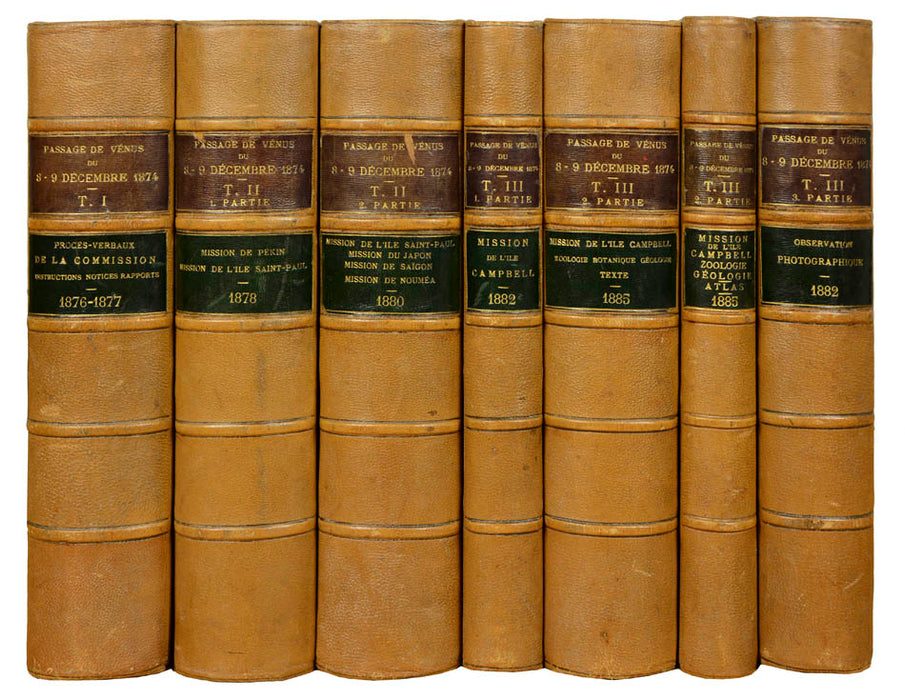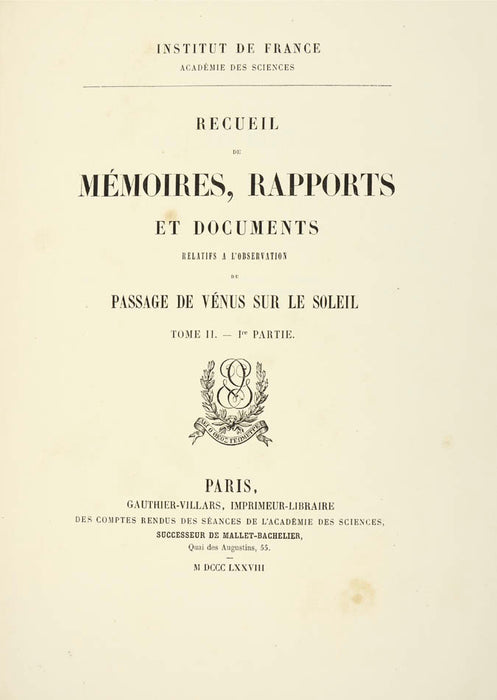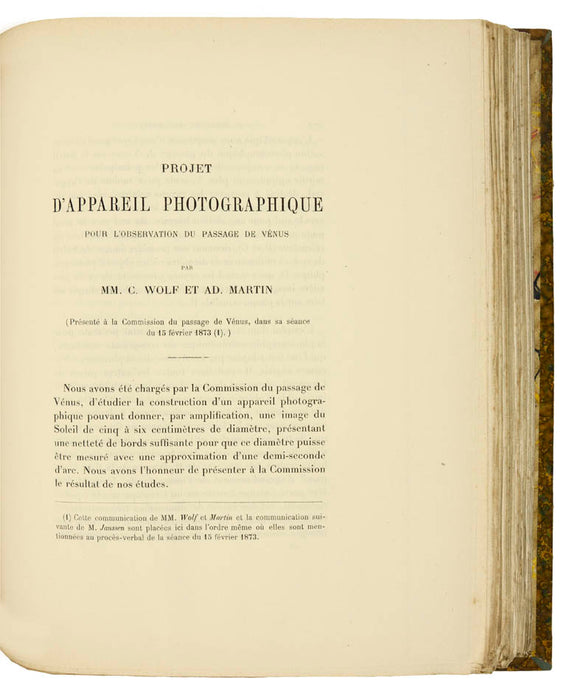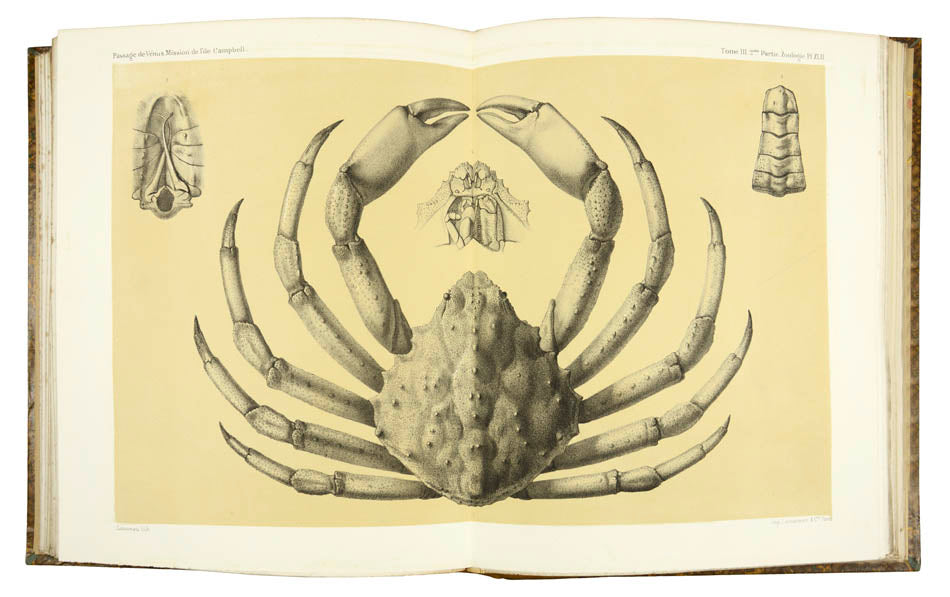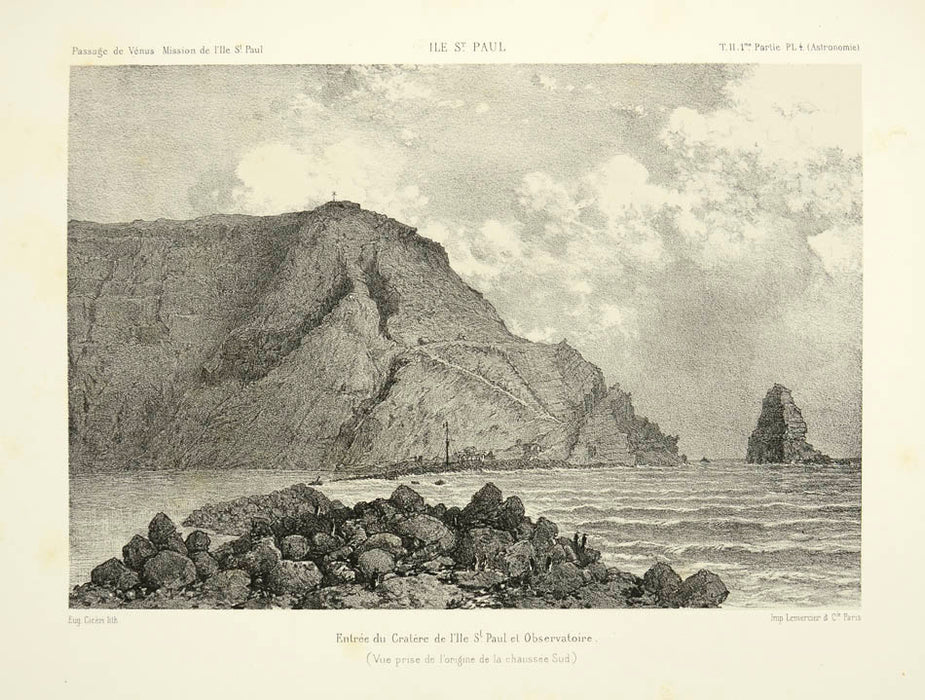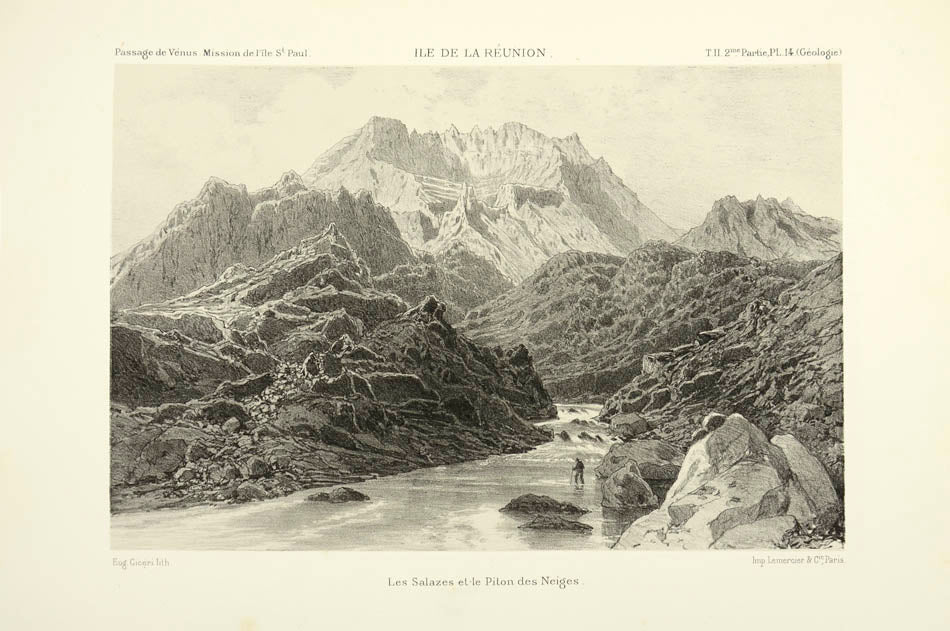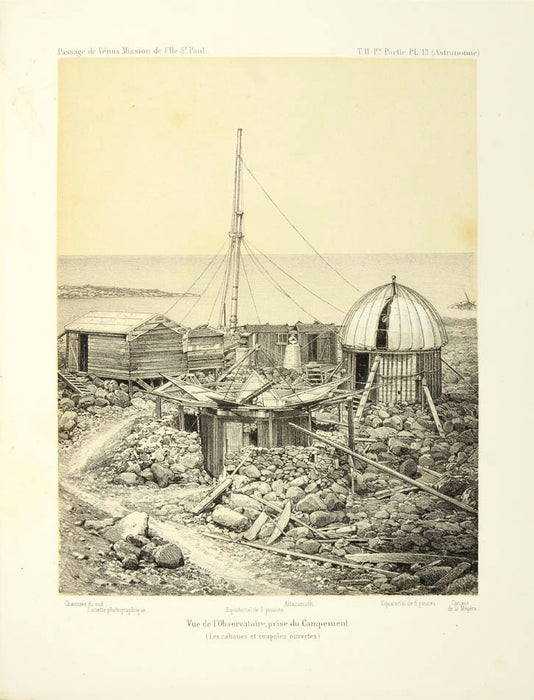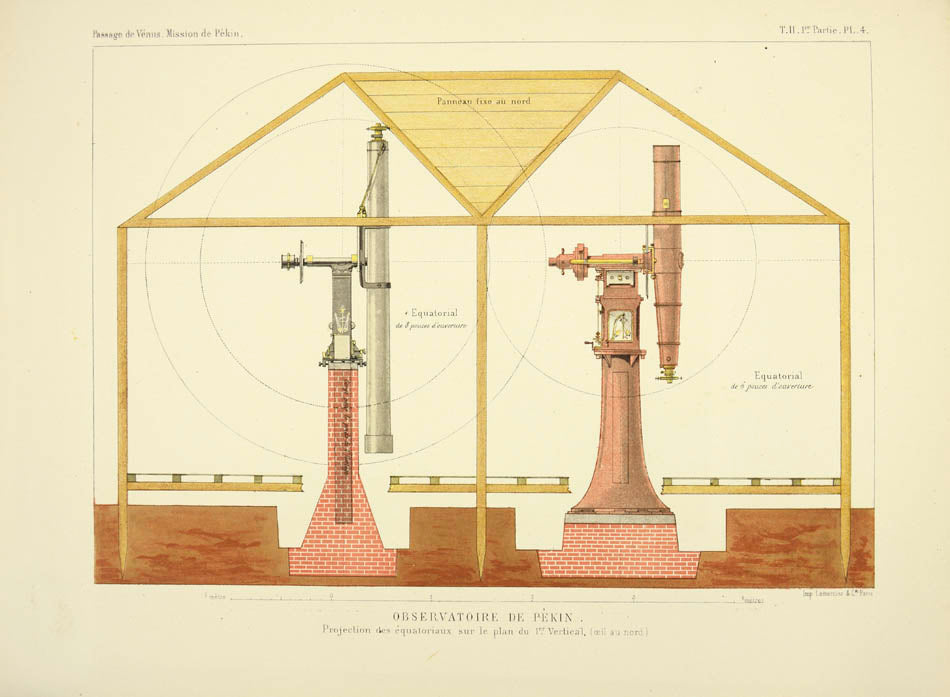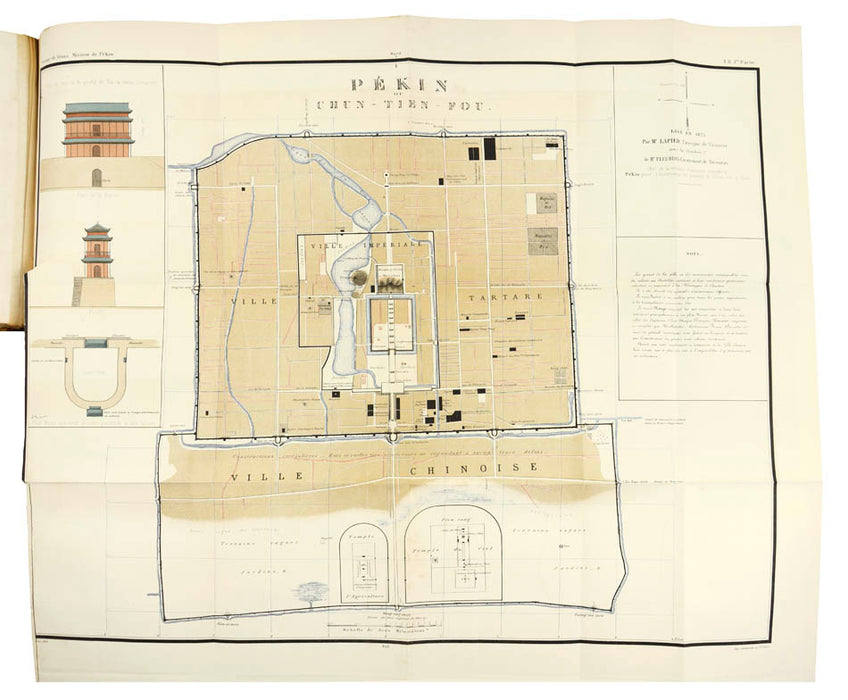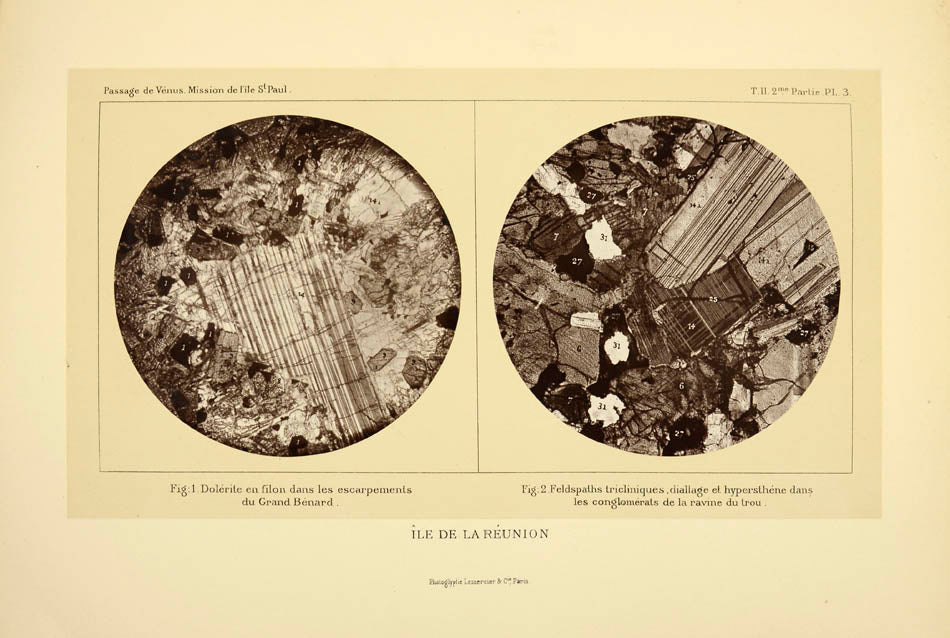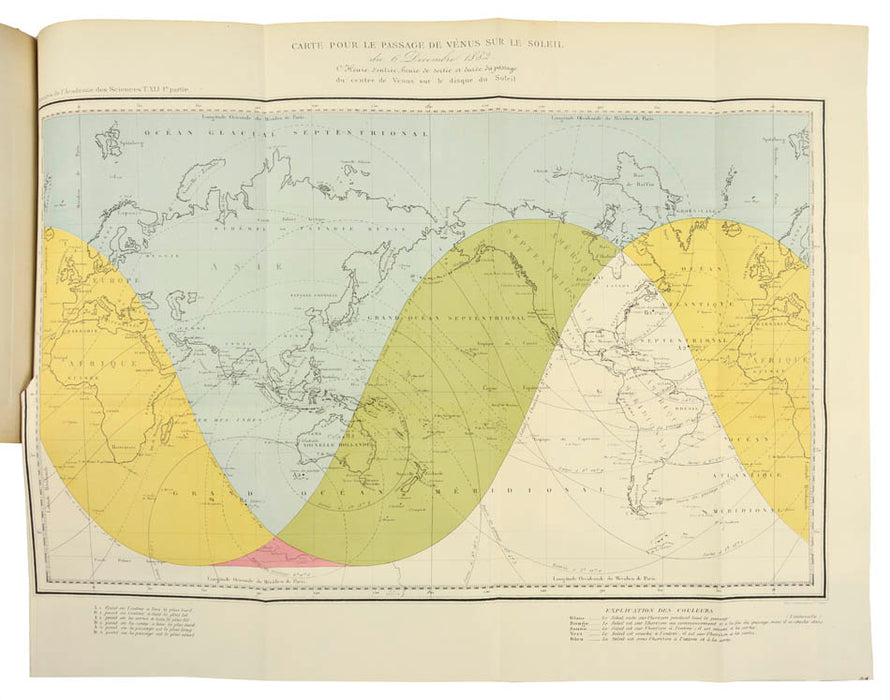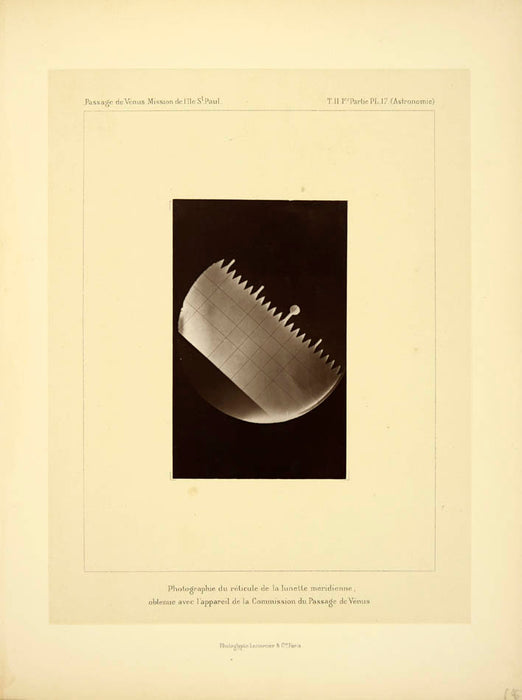
Recueil de mémoires, rapports et documents relatifs à l'observation du passage de Vénus sur le Soleil.
Paris, Firmin-Didot puis Gauthier-Villard, 1876-85.
The passage of Venus between the sun and the Earth occurs twice every 113 years with an eight-year interval between the two instances. From its first predicted incidence in 1631 it has been used to study the universe, and during the 18th and 19th centuries it played a crucial role in the quest to accurately measure the solar system. In 1769 unsuccessful attempts were made at measuring the parallax with the aid of traditional telescopic lenses. During the next transit in 1874 the French astronomer Jules Janssen, chairman of the observatory in Meudon, introduced his 'photographic revolver', an early method for taking photos in sequence to show movement, which allowed more precise measurement of the transit.
The solar eclipse of 1874, detailed in these seven volumes, was only visible from the Pacific and Indian Oceans. Several national observation teams were sent from Europe and North America to study the phenomenon, making of the event a truly global expedition. The present work collects the documented efforts of the French scientific team, a group of fifty scientists who set up observational stations at Peking, Saigon, Yokohama, Nagasaki and Kobe in the northern hemisphere, and on the Isles of St. Paul and Campbell, as well as in Noumea, in the southern hemisphere.
Besides the astronomical observations, their reports also include research on the climate, zoology, botany and geology of several remote territories. These are particularly detailed in the cases of the Isle of St. Paul, the southern Indian ocean, Reunion Island, and the Isle of Campbell, to which two whole volumes (one of text and one of plates) are dedicated.
One of the contributors to the present research was Pierre-Henri Puiseux, who twenty years later the celebrated and monumental Atlas Photographique de la Lune.
First edition. 7 vols 4to (29 x 24 cm); half titles, additional titles, with vols I-IV & VII comprising 70 lithograph plates (including 7 large folding maps), numerous by Ciceri, several plates coloured, and 22 photographs (on 10 plates), with volume VI comprising 68 illustrative plates and one map, some wood engravings in text; traces of hand-writing offset to first title and some half-title, a tear to one large map, very occasional light spotting. Contemporary calf over marbled boards, spines in six compartments, raised bands, green and red morocco lettering pieces lettered in gilt; lightly rubbed.
Houzeau and Lancaster, 12291; cf. Canales, Jimena. Photogenic Venus: The "cinematographic turn" and its alternatives in nineteenth-century France. Isis. The University of Chicago Press. Dec 2002. pp. 585-613.
Provenance
Delivery
We offer secure and express delivery on all local and international orders of rare books, maps and prints placed through this website.






